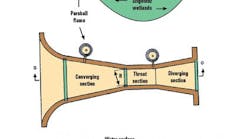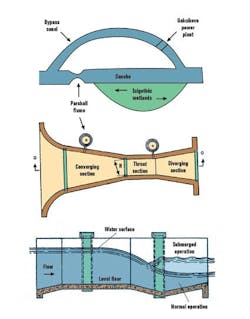In 1992, Czechoslovakia blocked the natural riverbed of the Danube and diverted her border river with Hungary into a concrete sealed canal onto her own territory. The plan was to create a gigantic artificial lake, which, during the evening hours when the demand for electricity is the highest, could be flushed through the electric turbines somewhat like a toilet.
This plan, rooted in the mentality of Stalinist gigantomania, did not die when the Red Empire expired or when Czechoslovakia disintegrated. It did not, because the beautiful wetlands of the Szigetkoz attracted the Austrian real estate developers, and the taking of Hungary's border river appealed to the Slovak nationalists.
The wetlands of the Szigetkoz evolved from the delta of the ancient Pannon Sea, which dried up after the last ice age. But in the process of drying up, it created some unique life forms that exist nowhere else on the planet. These species are unique, because they used to be salt-water plants and animals. But over the millenniums since the ice age, they adapted to fresh water. Because some 63 of these life forms are endangered by the diversion and because of the poisoning of the drinking water supplies by the flush toilet-mode of operation of the Gabcikovo power plant, Hungary took the case to the International Court of Justice in the Hague.
In 1997, the ICJ ruled that Czechoslovakia was wrong in rerouting the Danube into a concrete sealed canal, but Hungary was also wrong, because she had no right to cancel her participation in the project. Therefore the court ruled the two parties should negotiate a new agreement and only if they can agree, should they come back to The Hague for a second ruling.
Figure 1: Flows Over Time
The flow of the River Danube in average, wet, and dry years. The minimum flow ever measured was 400 m3/sec.; the maximum was 10,000 m3/sec.
After this decision, years of useless negotiations followed. During these years, through some unique cooperation between environmental and process control experts, a compromise plan was developed. That plan shows how the knowledge of measurement and control professionals can also make valuable contributions in the non-industrial fields.
In 2003, the Constitutional Court of Hungary has agreed to hear case number 988E/2000. If the court approves this case, it will order the Hungarian government to go back to The Hague for a second ruling and to consider the compromise plan as the proposed basis of a solution to the Danube lawsuit. The plan eliminates the polluted lake and the flush toilet-mode of operation and revives the Szigetkoz wetlands, but does that without eliminating the bypass canal, which serves improved shipping and electric power generation.
The key to the operation of the compromise plan is the Parshall Flume, which increases the level on its upstream side without blocking the river. This is a critical feature because, by eliminating the damming of the river and by keeping the riverbed open, pollutants will not accumulate and oxygenation of the river will be improved. If approved by the ICJ and built, this will be the very first Parshall-based hydroelectric plant in the world. This new approach could serve to eliminate the conflict between the energy needs and the environmental considerations of many hydroelectric plants.
The flow of the Danube ranges from 400 to 10,000 cubic meters per sec., averages at around 2000 cubic meters per sec. (Figure 1). In order for a wetland ecosystem to survive, it requires periodic flooding during the periods of high water flow. On the other hand, in order to maintain uninterrupted shipping and electric power generation, the bypass canal must be supplied with sufficient water for good shipping even during periods of minimum flow. The Parshall Flume resolves this seeming conflict.
The Parshall Flume
Developed by R.L. Parshall at the Colorado Experiment Station of the Colorado Agricultural College in cooperation with the Division of Irrigation of the U.S. Department of Agriculture, this device is a special type of venturi flume (Figure 2). The effect of the velocity of approach is practically eliminated, so a large upstream stilling basin is not required. The relatively high velocities through the flume tend to flush away deposits of silt and other solids, which might otherwise accumulate and cause pollution or restricted flow-rate. There are no sharp edges, no pockets, and few critical dimensions. Also, the flume can be locally fabricated from available materials, in case of the Danube, from concrete.
Calibration data based on physical dimensions are available for throat widths up to 40 ft. with maximum capacity of 900,000 gpm. Naturally, for the Danube, this calibration data will have to be scaled up.
Figure 2: Flume On
In the compromise plan, the Parshall Flume is built in the main riverbed. By restricting the bed, it raises the upstream level so that, even under low-flow conditions, the bypass canal always has enough water.
Flow through the flume is approximately proportional to the three-halves power of level. Extreme accuracy is not claimed nor is required for this device; however, measurement is very dependable with minimum maintenance and good repeatability. Accuracy is adequate for most irrigation, wastewater, or sewage flow applications and is therefore more than adequate for the Danube application.
Downstream level has no effect on the measurement so long as the level near the downstream end of the throat does not exceed 70% of the level measured near the upstream end of the converging section. (Both levels are referred to the floor of the flume.) To calculate the flow through the flume, only one upstream level measurement is required. For a flume with a throat width (L) of over 8 feet, the applicable equation is:
where
L = width of throat section in feet
Q = volume flow rate in cubic feet per second
H = head in feet
For the Danube application, the throat section (L) would vary with head, so that at minimum flow (400 cubic meters per sec.) the upstream water elevation would be set at 128 m, which is the required level for good shipping. Between flows of 400 and 2,000 cubic meters per sec., the upstream water elevation would rise from 128 to 131 m above sea level, while at flows exceeding 2,000 cubic meters per sec., the water would be allowed to overflow the flume and flood the wetlands.
When I described the above compromise plan at a news conference in Budapest, I was pleasantly surprised there was interest expressed by members of the National Academy of Science, among others. It does seem that designing and building such a multifunctional Parshall Flume would be a challenge to the best flow control laboratories of the world. It would also seem that such a new approach to raising the water level without blocking the flow could allow us to benefit from hydraulic energy without any downside, such as pollution.
Bela Liptak, PE, process control consultant, is also editor of the Instrument Engineers' Handbook and is seeking new co-authors for the forthcoming new edition of that multi-volume work. He can be reached at [email protected].
Latest from Flow

Leaders relevant to this article:






